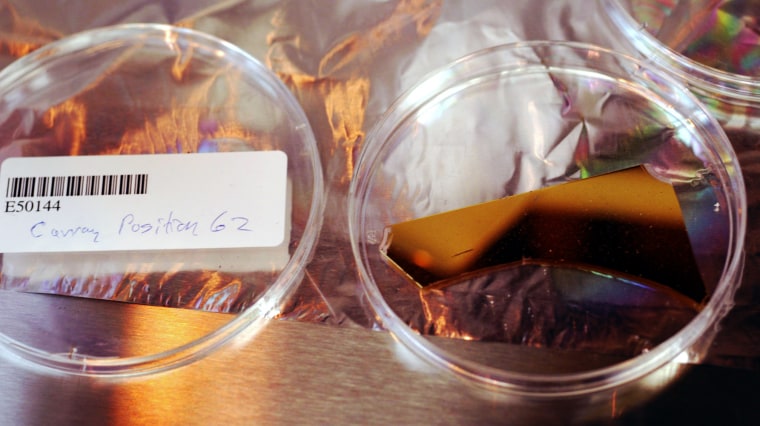Three weeks after the Genesis space capsule slammed into the Utah desert after its parachutes failed to deploy, NASA scientists remain hopeful they can salvage the mission and reveal clues about the origin of the solar system.
The scientists are nearly finished picking apart the capsule's mangled inner canister, which housed disks of exotic materials used for 2 1/2 years to capture solar atoms outside the Earth's magnetic shield.
A few disk fragments have been sent to California researchers, but NASA scientists are still working in Utah to preserve the bulk of the cargo. They plan to ship the samples to Johnson Space Center in Houston for decontamination -- the disks were splattered with mud, salts and splintered capsule parts in the crash.
Eileen Stansbery, astromaterials curator for Johnson Space Center, said the crash, which left the capsule's sample canister "contaminated and rumpled," will make the analysis difficult but not impossible.
"There is nothing that is a total loss. We've been able to recover every different collector type" that was unfolded in the solar wind, Stansbery said Thursday. She was at Utah's Dugway Proving Grounds as part of the team conducting the tedious salvage operation.
A 16-member NASA Mishap Investigation Board is trying to determine why the capsule's parachutes failed to deploy. The capsule hit soft mud at 193 mph and cracked open like a clamshell.
NASA investigators and Lockheed Martin Corp. engineers are focusing on electronic controls and sensors that were supposed to trigger explosives that release the chutes. Their report should be completed next month, NASA spokeswoman Gretchen Cook Anderson said Thursday.
